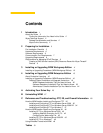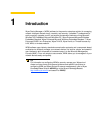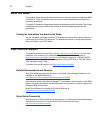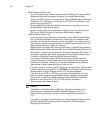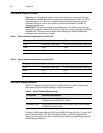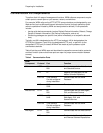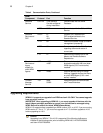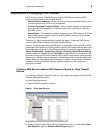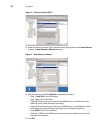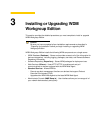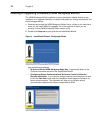
2 Preparing for Installation
This chapter contains the pre-installation requirements you must complete to prepare the
environment for WDM installation and configuration. After you have completed all
pre-installation requirements, you can continue with the installation/upgrade you want
("Installing or Upgrading WDM Workgroup Edition" or "Installing or Upgrading WDM
Enterprise Edition").
Pre-Installation Checklist
Before you begin installing WDM, be sure you have met the following requirements:
• Refer to the WDM Release Notes for changes in this version of WDM. WDM 4.9.1
adds additional security features that enhance secure management of your Wyse
devices. Use of WDM 4.9.1 requires that you install/upgrade to the latest WDM agents
(HAgents) included in WDM 4.9.1 (see WDM Release Notes for more details).
• Obtain and configure all hardware and software, as necessary (see "Hardware
Requirements" and "Software Requirements"). CAUTION: It is required that you do not
install WDM on any server which is currently dedicated to other tasks (such as a
Domain Controller, Backup Controller, Mail Server, Production Web Server, DHCP
Server, MSMQ Server, Application Server, and so on). It is highly recommended that
WDM be installed on a server that is dedicated to WDM services.
• Install a supported operating system on the machine to which WDM will be installed.
Be sure that all systems are up-to-date with current Microsoft service packs, patches,
and updates (see "Software Requirements").
• Install Microsoft Internet Explorer (IE) 6.0 or later on all machines.
• Use of the built-in HTML help files requires Java to be installed on all machines to
which you install the WDM Administrators Console (MMC Snap-in). Visit
http://www.java.com
and install the latest Java/JRE version for your operating system).
• If you are running IIS 7.0 on Windows Server 2008 SP1 or IIS 7.5 on either Windows
Server 2008 R2 or Windows 7, be sure to update the HAgent on your devices to the
latest WDM agents (HAgents) included in WDM 4.9.1 (see WDM Release Notes for
more details) to ensure your devices are discovered by WDM (otherwise, IIS limitations
may prevent discovery).
• Ensure that no other applications requiring IIS are running on the machine to which
WDM will be installed.
• Ensure that all required communications ports are available and open for proper
communication between servers, routers, and switches (see "Communication Port
Requirements").
• Ensure you have access to your operating system CD-ROM and your Microsoft
Windows system files for use during your installation. NOTE: During WDM installation
WDM checks the system to determine if all required software is present. If required
software is not present, WDM indicates which software is missing. Some required
third-party software is included with the WDM software, while other software is
available from your operating system CD-ROM or from the network location for your
Microsoft Windows system files (usually the i386 folder).





